Resources
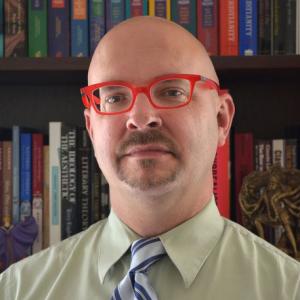
Over the past several years, there have been any number of events that have prompted professors to abandon their syllabi and lesson plans and create space for addressing events unfolding outside the walls of the classroom. This in-breaking of the contemporary, this pressure of the immediate, is often traumatic in nature. It frequently relates to histories of racism, nationalism, imperialism, xenophobia, misogyny, or homophobia. It may stem from global, national, community, or even campus contexts. Not all professors and students will feel the force of the blow in the same way. Addressing the affective, psychic, cognitive, and physical after-effects of our “shared” reality transpiring alongside course content poses any number of significant pedagogical challenges. As much as current events may require a certain agility, presence, nimbleness, and attentiveness, I want to think instead about the pedagogical challenges of teaching course material that demand similar skills. What happens when one is teaching a topic that is still unfolding? In some ways, virtually anything taught in the religious studies classroom is still “live” in important ways: this, in fact, might be something that we are trying to get our students to understand. If I am teaching Hebrew Bible, I will have to grapple with the ways that Christian students read those texts because of what they’ve heard in church or Sunday school. If I am teaching about material religion, I will have to grapple with disputes around Confederate memorials, insofar as they are sites of sacred meaning—left or right—for many people. And, of course, if I am teaching about Islam or new religious movements, I will have to negotiate the complex and disparate motivations and (mis)understandings that prompt students to enroll in my classes. But some topics, of course, are more alive than others. As I’ve mentioned in previous posts in this series, I recently taught a course on the Catholic sex abuse crisis and am scheduled to teach it again in the coming academic year. Although Church officials and apologists are invested in characterizing the crisis as something that is finished, resolved, and in the past, this is a polemical position, not one grounded in the evidence. New allegations of abuse surface on a weekly—if not daily—basis. New information about what bishops, cardinals, Vatican officials, including the Pope, knew, did, and failed to do surface with as much frequency. We continue to gain greater insight into the global scope of the scandal—both historically and contemporaneously. With every positive step forward—in terms of policy changes or the rhetoric of pronouncements—there are just as frequently significant strides backward. There are stories about study commissions, and institutional apologies, and advocacy groups, and the vagaries of each that continue to shape the crisis and its meanings. And, then, of course, there are the parallel stories of sexual abuse and misconduct as it has been practiced and ignored by a range of other institutions. When I was last teaching the course, I would always make sure and spend an hour prior to going to class to see whether some big story had broken since we last met that I needed to address in class. Sadly, the Internet in all its glory never failed to provide. Although this ever-moving target of what I need to include in my course is anxiety provoking, there’s also a calming freedom in these circumstances. I don’t need to try and master the material because I can’t. This inability, on my and my students’ part, creates a very different classroom dynamic. I never had to come up with strategies and practices to encourage collaborative learning; I only had to pay attention to what we were trying to understand. We necessarily had to cooperate, to pool information, to treat each other as equal partners in our common endeavor. I was able to drop the weight of the fantasy of “coverage,” which let both me and my students slow down, breath a little, and reflect on the material in front of us more thoughtfully. And, of course, the attempt to understand—rather than the accomplished feat—is always at the forefront of everyone’s minds, underscoring the invaluable lesson that learning is a process and not an achievement. While the Catholic sex abuse crisis—and some other topics—are obviously and keenly living animals that demand this kind of pedagogical attention, we can learn something from such material about how we might want to teach generally. What do you teach your students about that continues to grow and change, to influence and shape the contemporary moment? How can you attend to those features and dimensions to create a different experience of learning, conversation, and inquiry?

Like Teresa Delgado I’ve composed and deleted several versions of this post. My first draft, started several weeks ago, reflected on how we talk about race, violence, and nationalism post-Charlottesville. I wanted to add my voice to the many inspiring people who have found ways to incorporate discussions of xenophobia, violence, and white privilege into their courses. In that post, I attempted to address the types of questions and frameworks that our students naturally employ in the aftermath of tragedies. Specifically, I was interested in the ways our students personalize these experiences by asking each other “What would you do?” We all hope to be the people who do something in the face of hate. If I hadn’t fallen behind in the wake of a hectic fall semester that would be the blog post you would be reading. This week, however, I’ve been tasked with a different question. Not what would you do, but rather, what will we do? I write not from the perspective of post- but the perspective of pre-. The League of the South (along with several other white supremacist organizations) are planning a rally next weekend in both Shelbyville and Murfreesboro, Tennessee. According to a spokesperson for the organization, the group is not rallying around the preservation of statues this time because the state’s Heritage Act already makes it quite difficult to remove confederate monuments. Instead, their stated topic of contention is refugee resettlement (an issue which happens to be close to home for me; I volunteer as a translator for a local refugee family). Right now there are several groups mobilizing in opposition to these rallies. Both local organizations and ones from out of town are coordinating resistance activities and counter-protests. Across social media and at various public forums, citizens of Murfreesboro are divided as to what the appropriate response should be. Some people are firmly resolved, others are uncertain, and many are afraid. Coincidentally, in my introductory Religion and Society class, my students are in the middle of a unit examining religious codes and systems of ethics. Last week, we looked at Craig Martin’s A Critical Introduction to the Study of Religion that explores how ethical decisions are filtered through Bourdieu’s notion of habitus. That seemed like as a good a place as any to think about the different possible actions that one might take against a white supremacist rally. So here’s what I did, pre- an event like Murfreesboro/Shelbyville 2017. I began by reflecting on the fact that we’ve had more conversations than usual about current and political events this semester. From Puerto Rico to Las Vegas; from nuclear threats from North Korea to a church shooting in the town next door; and from the epidemic of sexual violence against women epitomized by Harvey Weinstein to the movement inspired by Colin Kaepernick to expose systemic racism. Over the past two months there has been no shortage of current events for our students to assess or debate from the position of “What would you do?” I went on to say that I wanted to have a different type of conversation. Rather than describing or offering their own opinions, I would be asking them to do a higher level of analysis. Description, I told them, is an important part of what we do in religious studies, but that’s not all we do. I called on the students who are also enrolled in my Jesus class to explain how in that class we’ve undertaken a discursive analysis wherein we’re not interested in what the texts say (and certainly not in whether they are right or wrong), but instead are interested in what they do (and what the doing does). I printed off conversation threads from four different public Facebook events/pages that are making plans in opposition to the white supremacists’ rally. The different options presented by these pages are: Do nothing (ignore them, don’t invite conflict) Hold a family-friendly rally in a different location (a protest of sorts without direct confrontation) Have a counter-protest and call on citizens to stand against white nationalism, Nazis, and the KKK (a protest with direct confrontation but the avoidance of physical violence) Take part in an Antifa-style protest (direct confrontation with anticipated violence)[1] As we worked our way through the four sites, I asked the class to read the language closely for evidence of how each group describes themselves, the white supremacist group, and other planned protests. We discussed how they legitimated their perspectives and where they placed their authority (in the case of the first three, each claimed to have the best interests of Murfreesboro at heart and worked to establish their local identity via connections to different community groups and networks). From there we sketched out a basic conception of how all four read the moral position “white supremacy is wrong” through different lenses provided by their habitus and with very different consequences. The activity seemed to work well. I wanted to have a conversation that did something different than simply reiterating the students’ own viewpoints. While those types of conversations can be helpful because they provide an opportunity for students to practice speaking about contentious issues, this particular discussion is more urgent. Often I find classroom discussions devolve into each student waiting their turn to state their case and figure out who is “on their side.” My hope was that by working together to analyze the discourses and social locations of the different groups rather than evaluating each other, the boundaries that sometimes emerge in these conversations would dissolve. I also hoped that they might come to better understand their own perspectives and how they are shaped by social factors. Finally, and most prominently, I hoped they would be able to more fully understand these events as embedded in cultural systems, rather than independent, chaotic occurrences. By way of a conclusion, I offered myself as a case study and asked them (based on their assessment of my own identity, values, and habitus) to offer evidence for and against my participation in each of the four counter activities. I told them that I was uncertain about which of the options I wanted to participate in and that I would take their advice to heart when deciding what to do. They made passionate cases for and against each position with a level of perceptiveness and concern that exceeded my expectations. Previously, when I’ve thought about how I teach current events in the classroom it has focused on reflection as reaction. I’ve invited students to consider the facts of what “actually happened” and to delve into the nuance of context. In those cases, I have taken on the role of a guide, helping them articulate and expand their understanding. Here we don’t completely understand because we don’t yet know what will happen. There’s an ambiguity in addressing something that is uncertain and has yet to occur, especially amid the elevated risks that accompany a situation like this. In this case, I made them play the role of the guide, instructing me on how to understand and articulate my own perspective. As I write in a moment that feels like a calm before the storm, this ambiguity and liminality feels important – which is why I wanted to write this post before the event itself occurred. As faculty we’re good at having answers. Assessment and evaluation are second nature. But both with my students and on the Wabash Teaching Religion and Politics blog, I see value in capturing the uncertainty, inviting my students and you into the process of considering the question what will, as opposed to what would, you do. [1]For obvious reasons, I was unable to find anything on public social media forums making specific plans related to Antifa or similar groups so we read an article describing their perspective and activities.
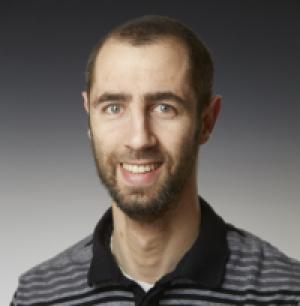
Since Trump became a candidate in the 2016 US presidential race, educators have continued to reflect on how his political presence might influence pedagogy. Personally, I find myself in a familiar quagmire: to what extent do I focus on current events in my Islamic studies courses? If I wanted to, each class session could devote itself exclusively to political developments, domestic and international; this has been the case for years. Trump’s incendiary comments, policy moves, and cabinet picks who malign Muslims, exacerbate this quagmire. Trump, for example, said that “Islam hates us” in a March 2016 interview with CNN’s Anderson Cooper. His cabinet picks and advisors have endorsed similarly disturbing, perhaps willfully ignorant, positions and rhetoric. In this blog post, I will discuss some strategies, as well challenges, for how Islamic studies teachers might react to a Trump administration in a classroom context, with special attention to building positive narratives in addition to challenging existing ones. A recent Executive Order bans travel to the US from nationals of several Muslim-majority countries. In the language of The Intercept’s Zaid Jilani, “If we bombed you, we ban you.” As students, professors, and researchers—even those with green cards—find themselves in limbo, the EO has already sent reverberations across the lives of Muslims in the US and abroad. Fortunately, many scholars of Islam remain positively engaged in public discourse and efforts toward bridge-building and political problem-solving on an ongoing basis. Ilyse Morgenstein-Fuerst wrote a blog post for the University of Vermont, “Trump 2016: The View from Islamic Studies,” in which she details the connections between Trump’s rhetoric, cabinet choices, and their consequences. Caleb Elfenbein, an author for this “Teaching Islam” blog, has contributed to an important project that maps anti-Muslim crimes in the US. Also chilling is Mohammad Fadel’s article for The Islamic Monthly that details worst-case scenarios for Muslims under a Trump administration, including comparisons with Japanese internment camps. This is all to say that there are simply too many, individual as well as cumulative, momentous and worrisome news headlines to introduce to an undergraduate Islamic studies course while still covering other material in the course. Are the Challenges (that) Different than Before? Effective pedagogy includes understanding one’s context, including institutional goals, student demographics, and the current political landscape. An effective way, I find, to invite students to draw personally meaningful connections to course material is to always keep in mind popular symbols and ideas that bear, even indirectly, on what we study. The absurdity of mainstream media coverage of Islam can also offer some cathartic moments of laughter, which also helps ease students into challenging discourses. In terms of noteworthy contributions that Muslims make to American public life, we saw Linda Sarsour—a Palestinian American activist—lead organizing efforts for the Women’s March on Washington. Keith Ellison, the first Muslim member of Congress (now in his sixth term), received the endorsement of Bernie Sanders for chair of the DNC, and the funeral of Muhammad Ali in June 2016 attracted international media attention, including its full broadcast on Fox News. In a beautifully narrated but also depressing account, NPR’s Asma Khaled details what it was like, as a Muslim woman, to cover Trump’s campaign during the election. As Amir Hussain adroitly argues in his recent book, Muslims and the Making of America (Baylor, 2016), we have much to learn about American cultural fabric by studying the role of Islam and Muslims in our history, even as it continues to unfold. In my capacity as host for New Books in Islamic Studies podcasts, I have interviewed a number of scholars—including Amir Hussain, Sophia Arjana, and Todd Green—about how current political affairs impact the lives of Muslims in the US. I keep my students in mind as one audience for these interviews, and I have repeatedly assigned my students the interview I conducted with Todd Green, on Islamophobia (which prospered in the American mainstream long before Trump reached the national spotlight). The Good, the Bad, and the Mystical Despite the many humanizing accounts about Muslims that my students study, these same students also tell me that they aren’t surprised to learn about the pervasive Islamophobia in the news cycle. But don’t some details shock them, even a little bit? In a 2015 Public Policy Poll, for example, about 30% of Republicans and 19% of Americans supported bombing Agrabah—the fictional city from Disney’s Aladdin. Among Trump supporters: 41%. As I wrote in a previous “Teaching Islam” blog post, students can use current political tensions, and how they respond to them, as a way to make sense of Sufi conceptions of spiritual growth. “Do I,” students might ask themselves, “harbor anything related to these views that I find so toxic and ignorant?” I’m currently teaching Islamic Mysticism for the third time, and I’ve implicitly chosen in past iterations to focus less on current events than I do in my introductory courses on Islam, or even in my courses on the Qur’an in which we explicitly explore contentious political topics. This time, however, I find myself taking closer stock during class time of political context, and not only because of the most recent presidential election. I think students likewise crave a balance between attention to (depressing) current events and engaging with aesthetics and intellectual discourse that don’t immediately relate to the latest fake news (or “alternative facts”?) on their social media feeds. In conclusion, I would like to include a brief reflection on student activism and its connection to teaching. As a graduate student at UC Santa Barbara, I witnessed some student groups host anti-Muslim ideologues including Dennis Praeger, David Horowitz, and Daniel Pipes. Frequently, I would watch many other student groups respond with formal protests, which I found both heartening and problematic. Indeed, protest is perhaps part of the human spirit; it encapsulates much of what it means to thrive in a democratic society. It’s also an effective catalyst for change as numerous examples from history attest. At the same time, however, I regularly remind myself that part of the difficult intellectual work of teaching and learning involves building narratives, not only challenging visible narratives. Both are necessary, and my course on Sufism helps me, and I hope my students as well, appreciate the significance of this balance, the complementarity between jamal (beauty) and jalal (majesty)—two sides of the same human condition. Where do you strike your balance in terms of navigating planned course material with course-related current events as they arise throughout the term? Please share in the comments section.
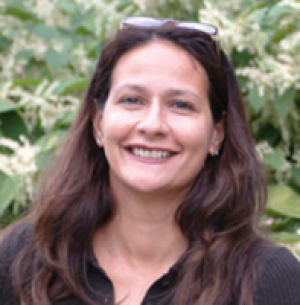
Sufia Uddin Associate Professor Connecticut College Since 9/11, colleges and universities have increased their course offerings in Islamic traditions and Muslim cultures. Yet, it seems that anti-Muslim rhetoric is everywhere. In Caleb Elfenbein’s recent blog, he points out that our students know only the world with our “war on terror”
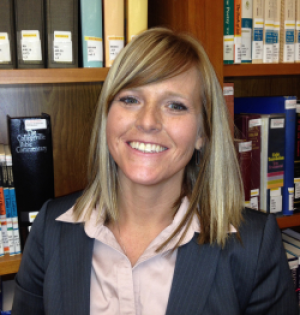
Ella Johnson, Ph.D. Assistant Professor of Systematic Theology St. Bernard’s School of Theology and Ministry I didn’t plan to bring it up. In fact, I had made a conscious decision to not talk about it. But, in the middle of class, I said something. I had to. I still wonder if I made the right decision. August 27 was the first day of my Theology of Church and Ministry class. I was prepared with a list of learning objectives I wanted to accomplish: introductions to the class and to each other; review of the course outline; overview of the scope...
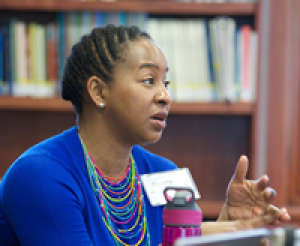
Nyasha Junior, Ph.D. Assistant Professor of Hebrew Bible Howard University School of Divinity Visit her website: www.nyashajunior.com I am organized. I have to-do lists, stop-doing lists, someday lists, and checklists galore. When it’s time to prep for the semester, I pull up my teaching Excel spreadsheet and get to work. Order books. Revise syllabus. Set up BlackBoard. And request to be assigned to my favorite sunny classroom. I had my lecture ready for the first day of my Introduction to Old Testament/Hebrew Bible class. It is a combination of welcome, syllabus review, and class overview while channeling Lou Gossett, Jr....